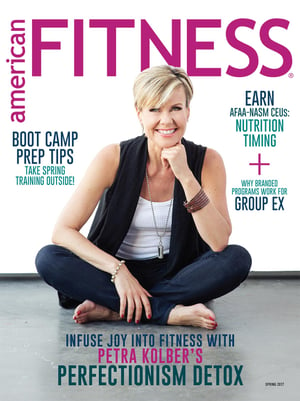 Originally appeared in the 2017 spring issue of American Fitness Magazine.
Originally appeared in the 2017 spring issue of American Fitness Magazine.
Conditioning can keep kids off the sidelines by improving skills and reducing injuries.
You've probably heard that today's youth are lazy, overweight and addicted to gaming. Don't believe it. Hundreds of thousands of kids compete in multiple sports (Bracko 2015). Many of them crave the guidance of youth sports coaches who understand the needs of young athletes. They want to be stronger and more competitive, just like their adult counterparts.
These young athletes are playing not only basketball, football, soccer and baseball. They also are participating in nontraditional sports like BMX racing, snowboarding, mountain biking, field hockey, softball and skiing. They understand that being stronger improves performance and reduces the risk of injury.
Furthermore, lots of teams need youth strength and conditioning coaches. Think about the spring ice hockey teams in the United States and Canada that parents are organizing as an adjunct to winter hockey. Kids are motivated to learn how to play, train and perform better, and their parents are eager to support their efforts.
Many teams budget money for a trainer. This is great news for qualified youth trainers, who have the opportunity to guide young players on every aspect of their sport - be it through inspiring words, teaching foundations of strategy and technique, proper running form, fundamental sports skills, or guiding athletes on appropriate rest and recovery. And there's always a need for fitness professionals trained to help children and adolescents improve their basic fitness and control weight.
Misconceptions About Youth Strength Training
People have a lot of misconceptions about the hazards of strength training for youth and adolescents. Allegedly, strength training stunts growth, damages bones and growth plates, or just doesn't help young athletes. These are all misconceptions (Faigenbaum 2016; Faigenbaum & Myer 2010). I confronted the myth of strength training stunting growth in a conversation with a personal trainer at a fitness conference.
The trainer's physician told him he would be 2-4 inches taller if he had not strength trained as a young athlete. And the trainer believed his physician. Fitness professionals need to verify such statements, even when they come from a seemingly authoritative source.
Faigenbaum (2016) says there is no evidence that strength training stunts the growth of children. If sports and strength training are performed for less than a combined total of 15 hours per week with moderate intensity, growth is not affected (Haff 2003).
Injuries to the growth plates can occur - usually because of improper technique and too much resistance-but they rarely affect normal growth (Haff 2003). To prevent injury, youth and adolescents should not attempt a 1-repetition maximum. It is better to count maximum pushups (or other strength move) completed in one minute. You can learn how to teach proper push-up form from this resource.
Though strength training applies some torque to young bones and joints, a lot more force happens when an athlete makes a tight turn in ice hockey, lands a jump in BMX cycling or skateboarding, maneuvers through a half-pipe in snowboarding, dismounts in gymnastics, or kicks a ball in soccer (Malina 2006).
Benefits of Strength Training for Youth
Strength training may not improve sport - specific precision skills such as pitching a strike in baseball, scoring a goal in soccer, hitting a jump shot in basketball or serving an ace in tennis. But it can improve motor skills for activities such as the long jump, 30-meter dash, agility running and squat jump (Falk & Mor 1996; Lillegard et al. 1997; Christou et al. 2006). And Gorostiaga et al. (1999) found that strength training improved European handball throwing velocity in adolescent players.
More generally speaking, the National Academy of Sports Medicine says that young athletes who strength train can improve gross motor skills, reduce body fat, increase muscle mass and improve psychosocial well-being (NASM 2012). Strength training also increases bone mineral density of girls (and boys), decreasing the risk of developing osteoporosis as they age.
And the short, high-intensity effort of strength training can pique the interest of children with excess weight who generally do not like continuous low-intensity exercise (Faigenbaum et al. 2009). Strength training may also indirectly reduce the risk or severity of sports-related injuries (Dahab & McCambridge 2009).
Despite these evidence-based benefits, many people mistakenly believe that strength training doesn't help young people because they don't have enough testosterone to increase muscle hypertrophy. A study contradicting this myth was conducted by Faigenbaum et al. (2002), who found that boys and girls ages 7-12 who strength trained one or two times per week significantly improved their chest press and leg press (compared with age-matched controls).
Children gain strength through neural adaptations, not muscle hypertrophy (Ramsey et al. 1990). Increases in strength result from improved motor neuron recruitment and firing rate (Ozmun et al. 1994).
When all said and done, hypertrophy is an effective modality for children.
Key Elements for Effective Youth Strength Training
Successful youth strength training depends on having a strength coach who is trained to work with young athletes (see "Vital Knowledge" box). It also requires proper supervision for instruction and feedback, age-specific instruction and safe training protocols. Youth and adolescents should never use strength training equipment without supervision from a qualified strength training professional (Faiganbaum et al. 2009). Here are some additional elements to keep in mind.
Program design and equipment for kids. It is important to train the upper and lower body and the core muscles (NASM 2012). A successful technique is circuit training, in which athletes perform exercises for 20-40 seconds and count the repetitions. The resistance can come from free weights and machines, but non-traditional forms of resistance - such as rubber tubing, medicine balls, ropes, sandbags and body weight - can make training more fun and less intimidating. For the trainer, non-traditional resistance equipment is also typically easier to use and transport, and it is less expensive (NASM 2012).
Safety. It is important to be safety conscious about slips, trips and falls. The floor of the training facility must be clear of tripping hazards, with no water or water bottles on the training floor. All gym bags must be kept in the locker room or stored away from the training area.
Technique. It is important to teach-and insist on-correct exercise technique. A trained youth exercise specialist can detect errors in exercise technique and give immediate feedback and guidance (and remember to give positive feedback when an exercise is done correctly).
Psychosocial factors. It is important to understand that young athletes have a psychosocial uniqueness that makes proper communication important. Finally, a youth exercise specialist has to be able to make exercise fun (NASM 2012).
Program Design for Young Athletes
Whether they're into soccer, hockey or BMX racing, young competitors - and their parents-need the guidance of professional trainers. The following strategies can provide a science-based starting point for fitness professionals seeking to design programming for young athletes, including warm-up specifics and application of the NASM Optimum Performance Training™ (OPT™) model.
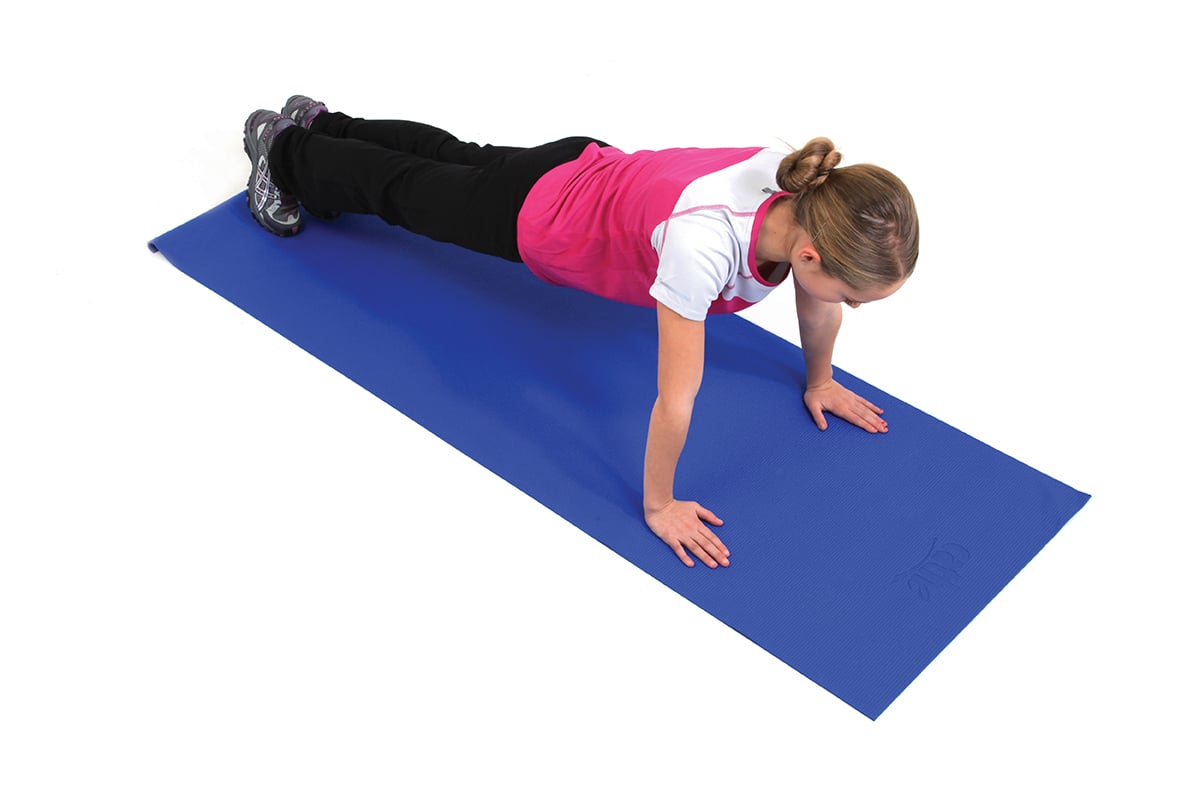
Warm-Up for Youth Strength Training
Warm-ups can be 10-15 minutes and should not make the athletes too tired for the workout. A proper warm-up before strength training can consist of the following:
- A combination of short static stretching and dynamic stretching to start the muscles moving
- Body-weight training exercises such as pushups, squats, front planks and lunges
- Low-intensity interval running (Faigenbaum & Myer 2010)
- Foam rolling (According to NASM 2012, this can be introduced as part of a young athlete's warm-up.) Exercises using this are introduced in NASM's Youth Exercise Specialization text (see "Vital Knowledge" box).
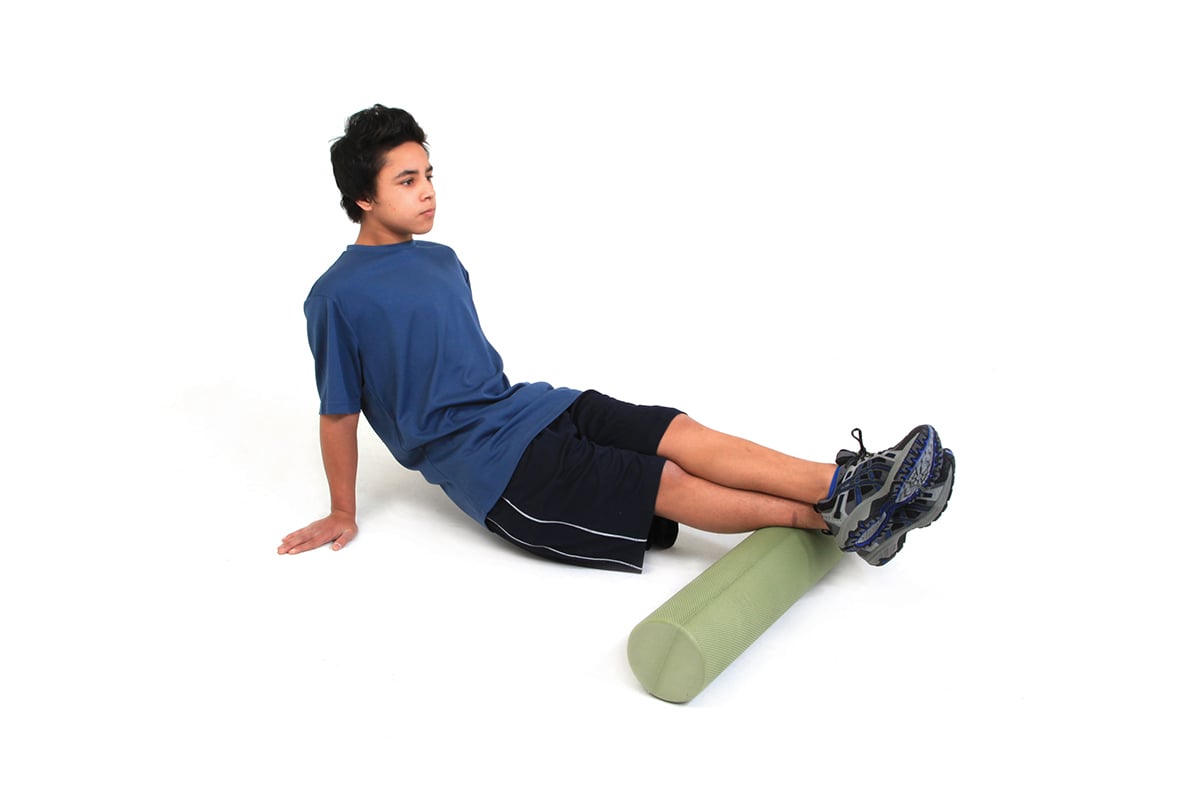
THE NASM OPT MODEL AND YOUNG ATHLETES
The NASM OPT™ model progresses through three levels: stabilization, strength and power. (See table for recommendations on sets, reps, intensity and recovery time for each level.) You can follow objective weight and repetition goals to decide when an athlete can increase resistance.
However, it might help to determine resistance increases by "training age maturity" and athletic ability improvements. Faigenbaum (2016) suggests that young athletes earn the right to lift more by improving their resistance training skills. Here are additional ways to apply the OPT model to young athletes.
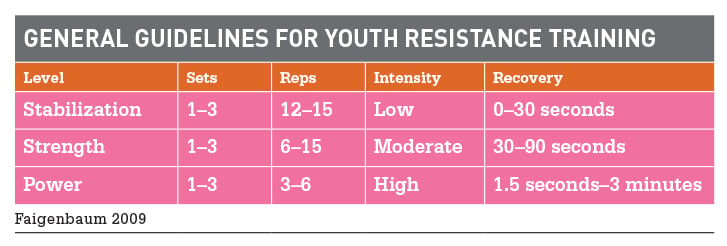
Stabilization Exercises
The stabilization endurance phase focuses on foundational exercises to develop motor programs for compound exercises and prime moving muscles. When young athletes learn exercises, they can use body-weight training to emphasize correct body position, form and technique (Dahab & McCambridge 2009).
Young athletes must learn how to perform four key training exercises that are building blocks for more advanced training:
- Front plank, on knees or toes, maintaining neutral spine
- Pushups, on knees or toes, maintaining neutral spine
- Squats, keeping head up and upper body still, with movement from hips, knees and ankles
- Lunges
Other stabilization exercises (with somewhat unstable body positions) include:
- Seated dumbbell overhead press, on ball
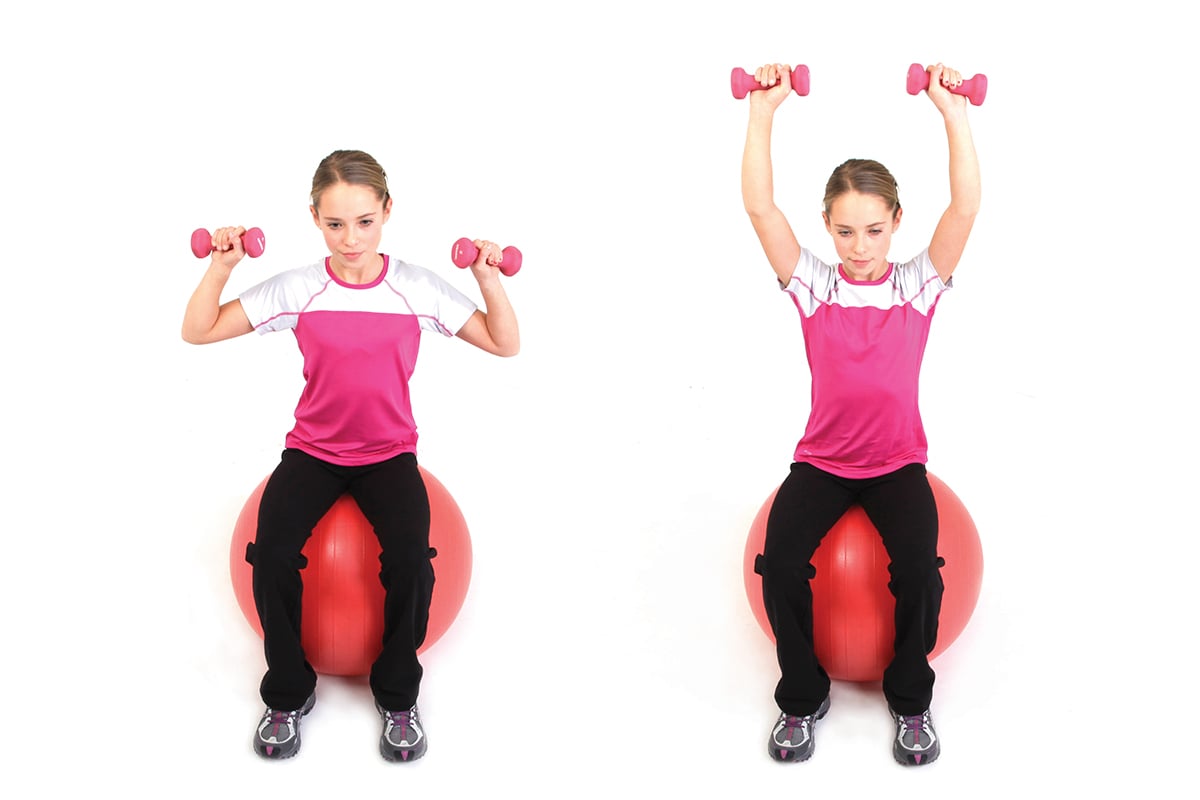
- Single-leg tubing row
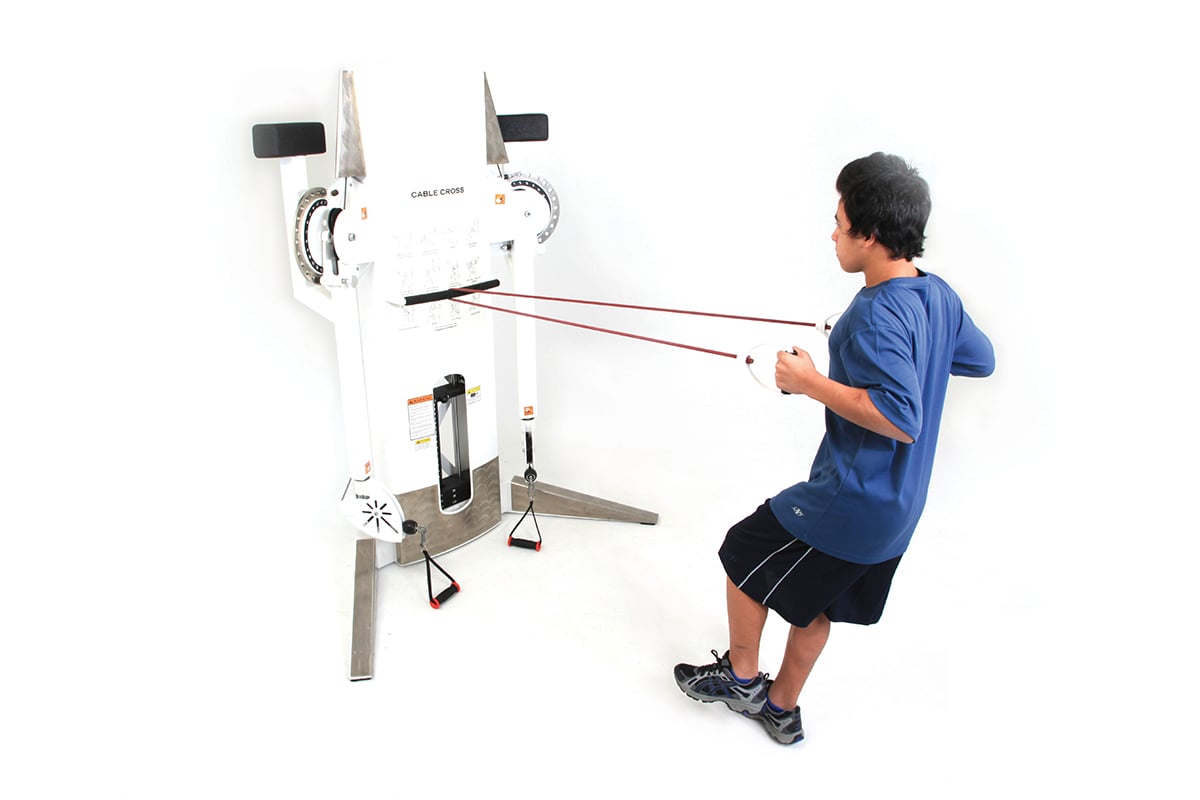
- Forward lunge to single-leg balance
- Step-up to single-leg balance to dumbbell curl to overhead press (NASM 2012)
Strength Exercises
When young athletes have developed a motor program for near-perfect exercise technique and improved stability, they can progress to exercises designed to further boost muscle strength. In the OPT model, Phase 2: Strength Endurance includes exercises that are performed in more stable body positions to focus on improving strength of the prime movers. (Phases 3 and 4 of the Strength Level - hypertrophy and maximal strength - generally aren't goals applied to young athletes.) Here are some strength exercises that are appropriate for young athletes:
- Medicine ball squat to overhead press
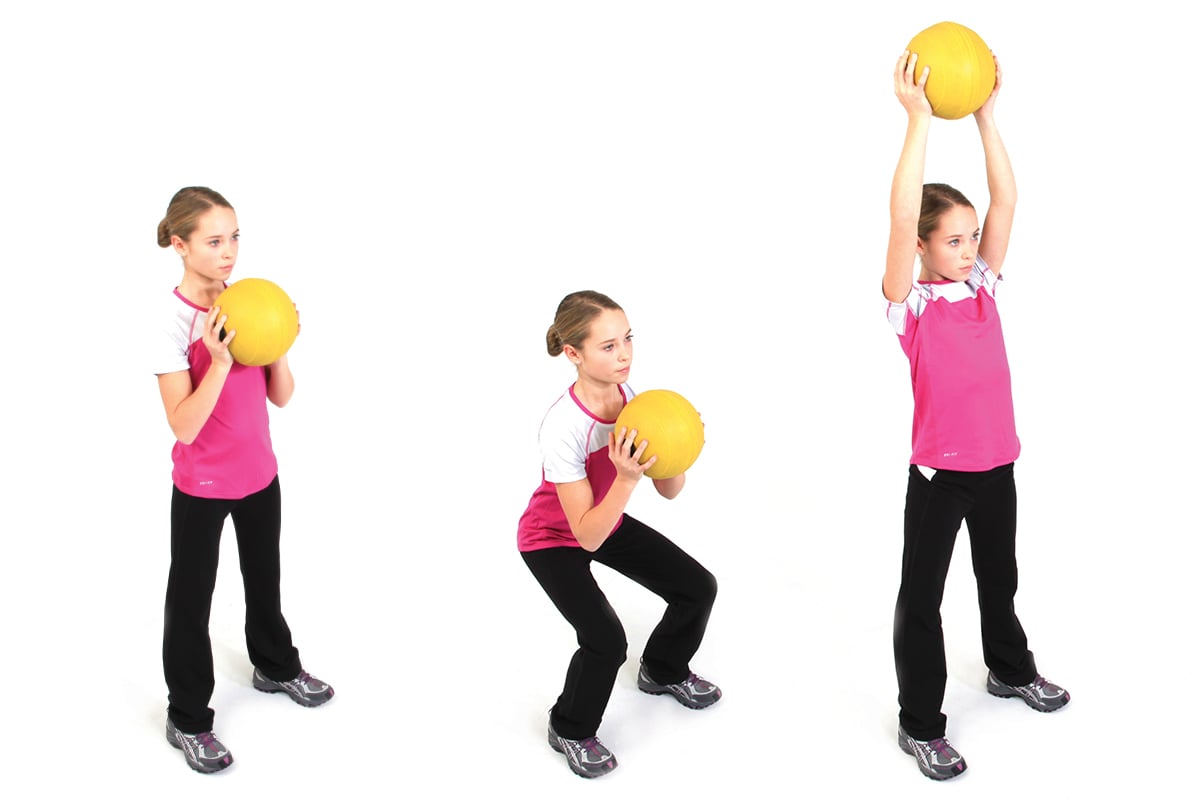
- Staggered stance tubing chest press
- Seated tubing row
- Seated dumbbell overhead press, on bench
- Dumbbell squat
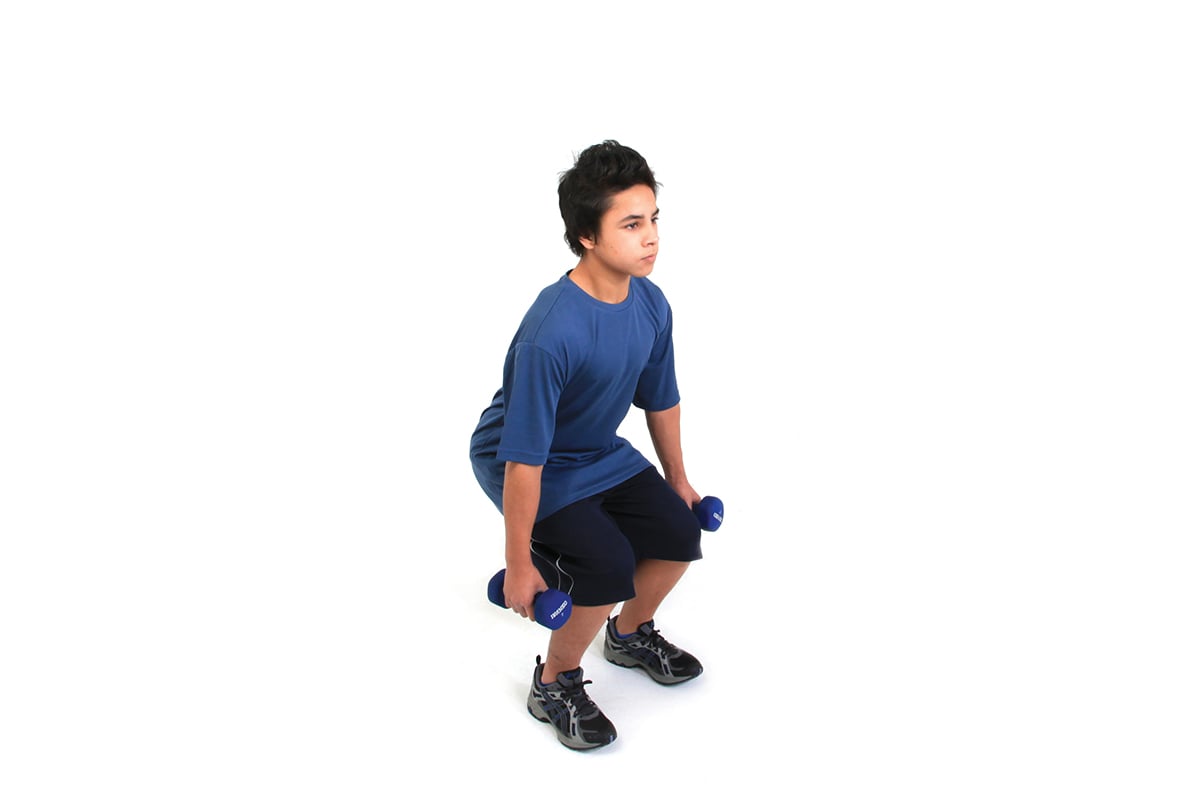
Power Exercises
Power exercises use explosive movements, so young athletes need to prove they are ready to progress to this phase. They do that by showing competence in exercise technique, physical and mental "exercise maturity," and resistance training skill (Faiganbaum 2016). Power exercises include the following:
- Medicine ball chest pass
- Medicine ball soccer (overhead) throw
- Medicine ball oblique (lateral) throw
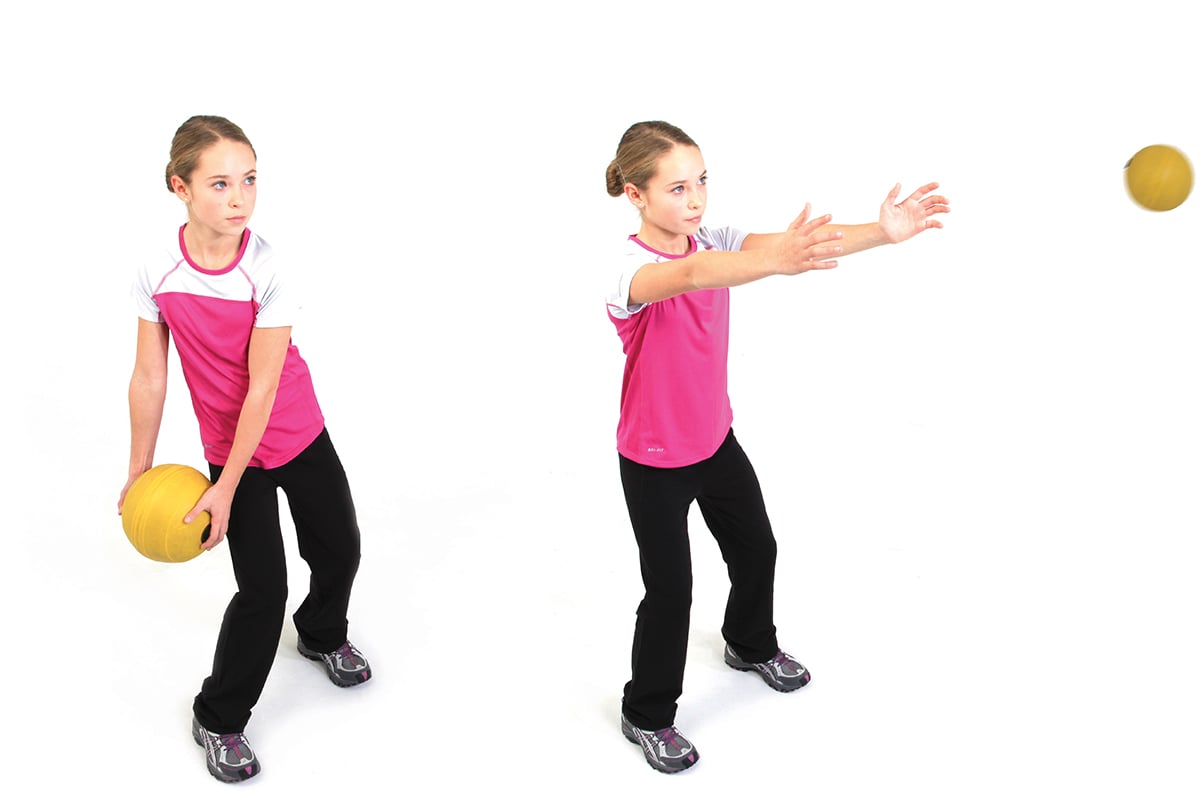
- Squat jump
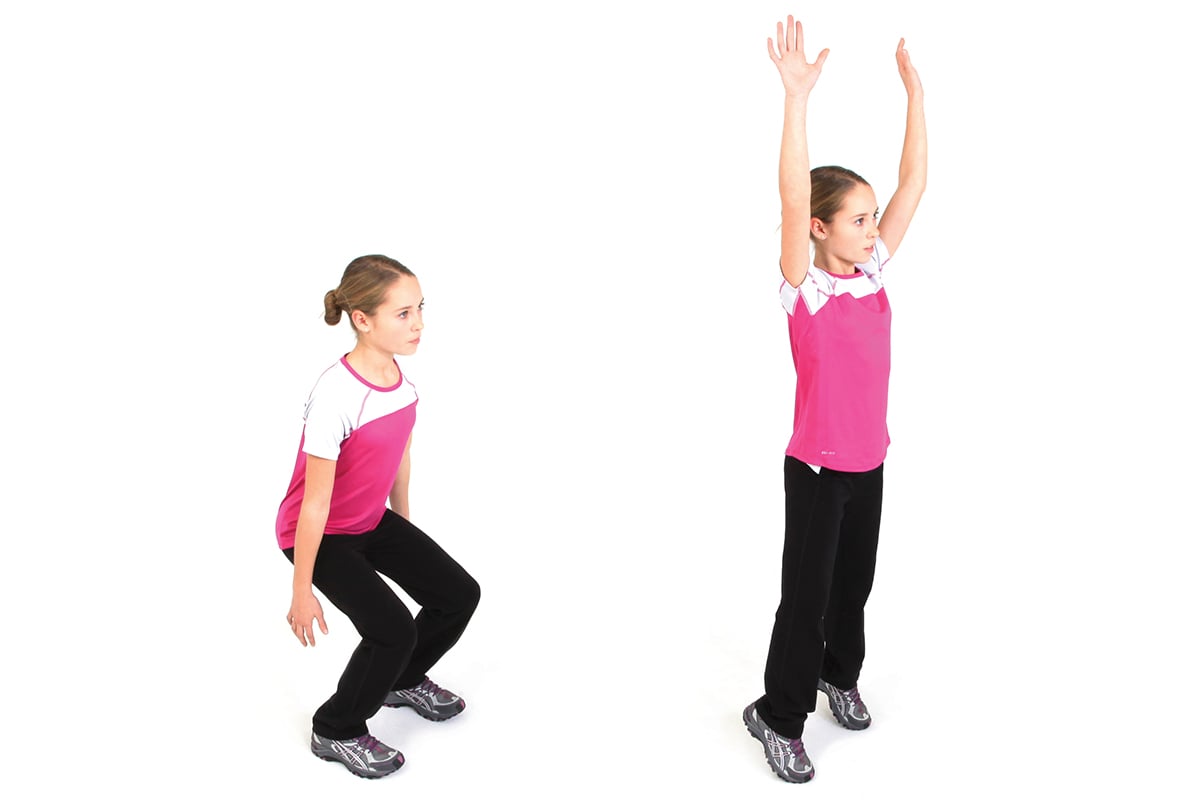
- Speed squat to overhead press, using medicine ball or tubing
The OPT model provides a safe and effective way for trainers to help children and adolescents improve their overall performance in their sports of choice, as well as enjoy numerous additional gains that will improve them psychologically, psychosocially and physically.
Start with this solid foundation of evidence-based strategies, add your creativity and you can set up today's youth for a lifetime of health and well-being.
Vital Knowledge About Young Athletes
Fitness professionals know how essential it is to customize a client's workout to their unique needs, abilities, compensations and even something as simple and variable as how they're feeling on a particular day. This is perhaps even more true for young athletes, who differ not only in these areas, but also in maturity, psychological and psychosocial needs, and anatomy and physiology (and not just in terms of physical growth).
The NASM Youth Exercise Specialization provides the age-specific knowledge and tools necessary to enable trainers to meet the growing demand for youth fitness expertise. The program explains how to adapt the NASM Optimum Performance Training™ (OPT™) model to children's fitness, delivering and expanding upon information like that offered in this article. Subjects such as overweight/obesity, psychological considerations, and nutrition are also covered, and guidelines are supplied for assessments, flexibility, core and balance training, cardio, plyometrics, resistance training, and speed, agility and quickness work.
Online resources include a downloadable course manual and programming manual, as well as an exercise library, online quizzes and an online exam-all of which make it easy for trainers to access the information wherever it's most convenient. Here is just one example of the applied science found in the "Anatomical and Psychological Considerations for Youth" chapter of the YES manual.
Thermoregulation for Young Athletes
It may not surprise fitness professionals to learn that children are less able to thermoregulate, or regulate their body temperature. However, many children and adults don't give this much thought during summertime sports training. In part, thermoregulation is more difficult for children because, due to their smaller size and blood volume, their body holds less total water than does that of an adult. The result: Children begin to feel the effects of fluid loss sooner than an adult might. Another factor is metabolic rate:
Anyone who has seen an adolescent eat knows that kids are fuel-burning factories. This also means they warm up more quickly. For these reasons, it's important that trainers pay particularly close attention to the vital signs of young athletes in very hot (and cold) climes -and that rest, shade and hydration are provided when necessary to bring down an elevated body temp (NASM 2012).
REFERENCES:
Bracko, M.R. 2015. Youth athletics: Put excitement back into play. IDEA Fitness Journal, 12 (5), 28–37.
Christou, M., et al. 2006. Effects of resistance training on physical capacities of adolescent soccer players. Journal of Strength and Conditioning Research, 20 (4), 783–91.
Dahab, K.S. & McCambridge, T.M. 2009. Strength Training in Children and Adolescents: Raising the Bar for Young Athletes? Sports Health, 1 (3), 223–26.
Falk, B., & Mor, G. The effects of resistance and martial arts training in 6- to 8-year old boys. Pediatric Exercise Science, 8 (1), 48–56.
Faigenbaum, A.D. 2016. Youth strength training: Facts and fallacies. American College of Sports Medicine. Accessed Jan 30, 2017. www.acsm.org.
Faigenbaum, A.D., & Myer, G.D. 2010. Resistance training among young athletes: Safety, efficacy and injury prevention effects. British Journal of Sports Medicine, 44 (1), 56–63.
Faigenbaum, A.D., et al. 2009. Youth resistance training: Updated position statement paper from the National Strength and Conditioning Association, Journal of Strength and Conditioning Research, 23 (5, Suppl.), S60–79.
Faigenbaum, A.D., et al., 2002. Comparison of 1 and 2 days per week of strength training in children. Research Quarterly for Exercise and Sport, 73 (4), 416–24.
Gorostiaga, E.M., et al. 1999. Effects of heavy resistance training on maximal and explosive force production, endurance and serum hormones in adolescent handball players. European Journal of Applied Physiology, 80 (5), 485–93.
Haff, G.G. 2003. Roundtable discussion: Youth resistance training. Strength and Conditioning Journal, 25 (1), 49–64.
Lillegard, W.A., et al. 1997. Efficacy of strength training in prepubescent to early postpubescent males and females: Effect of gender and maturity. Pediatric Rehabilitation, 1 (3), 147–57.
Malina, R.M., 2006. Weight training in youth-growth, maturation, and safety: An evidence-based review. Clinical Journal of Sport Medicine, 16 (6), 478–87.
NASM (National Academy of Sports Medicine). 2012. Youth Exercise Specialist Manual. Leawood, KS: Assessment Technologies Institute.
Ozmun, J.C., Mikesky, A.E., & Surburg, P.R. 1994. Neuromuscular adaptations following prepubescent strength training. Medicine & Science in Sports & Exercise, 26 (4), 510–14.
Ramsay, J.A., et al. 1990. Strength training effects in prepubescent boys. Medicine & Science in Sports & Exercise, 22 (5), 605–14.
















